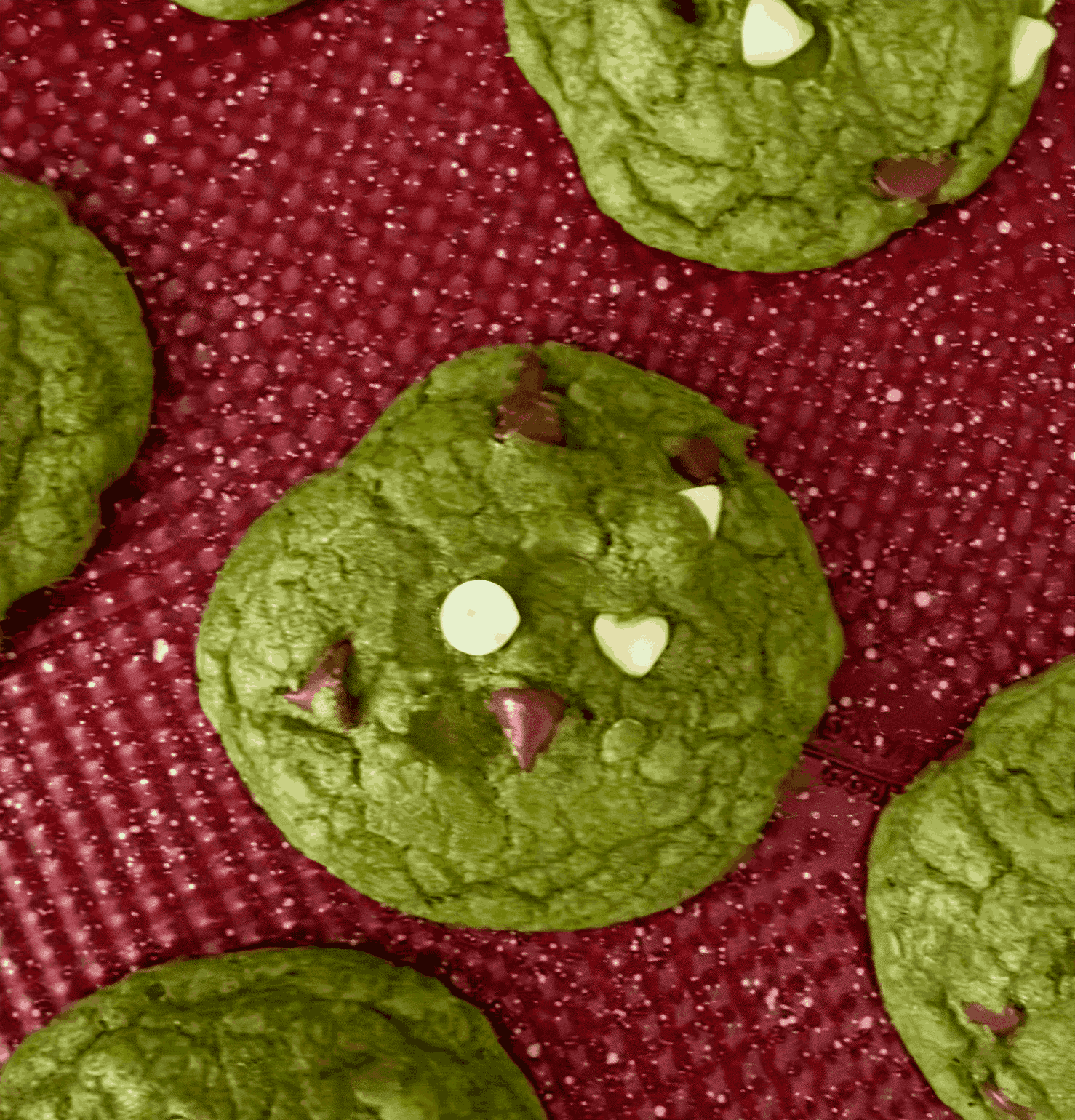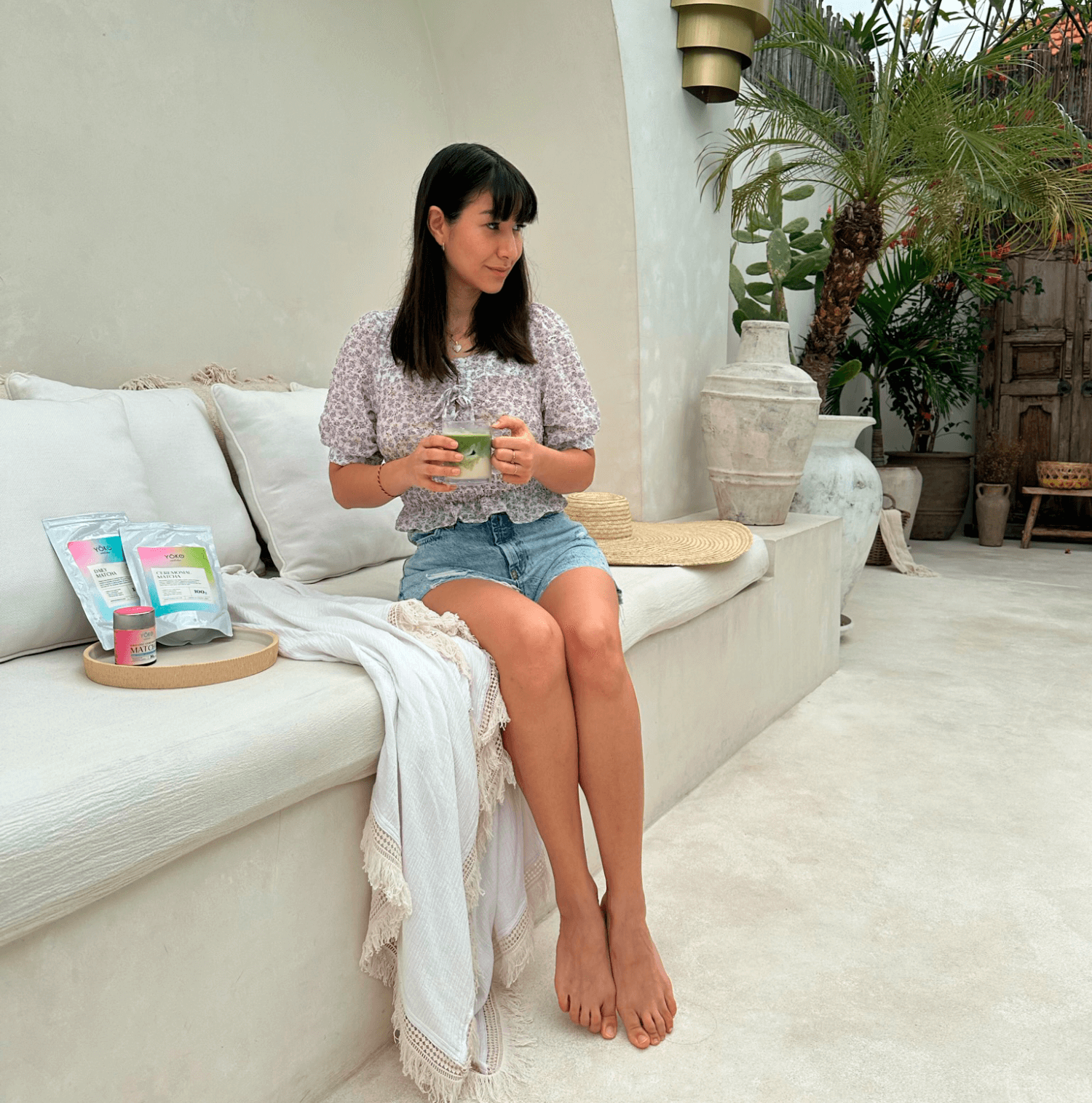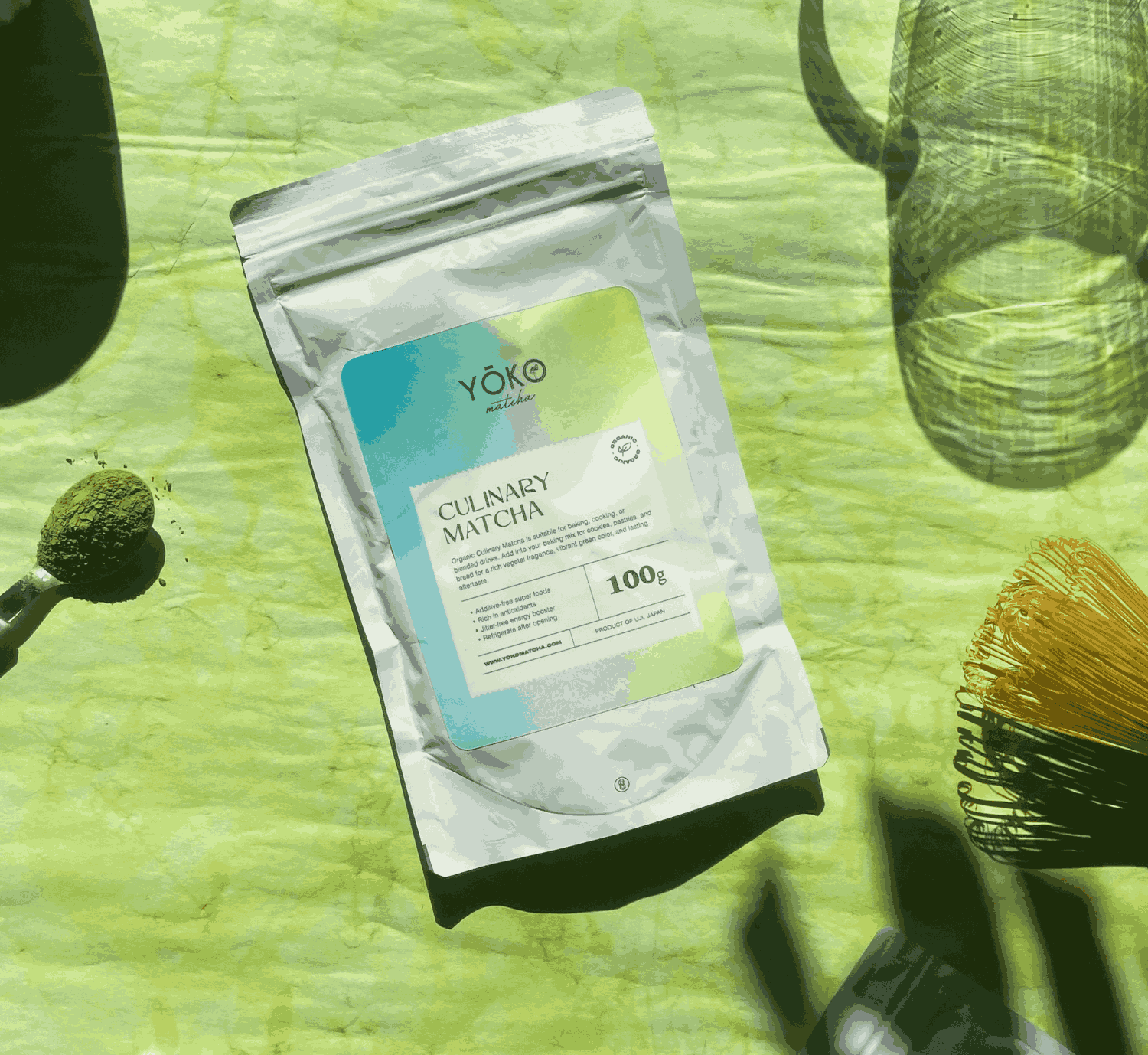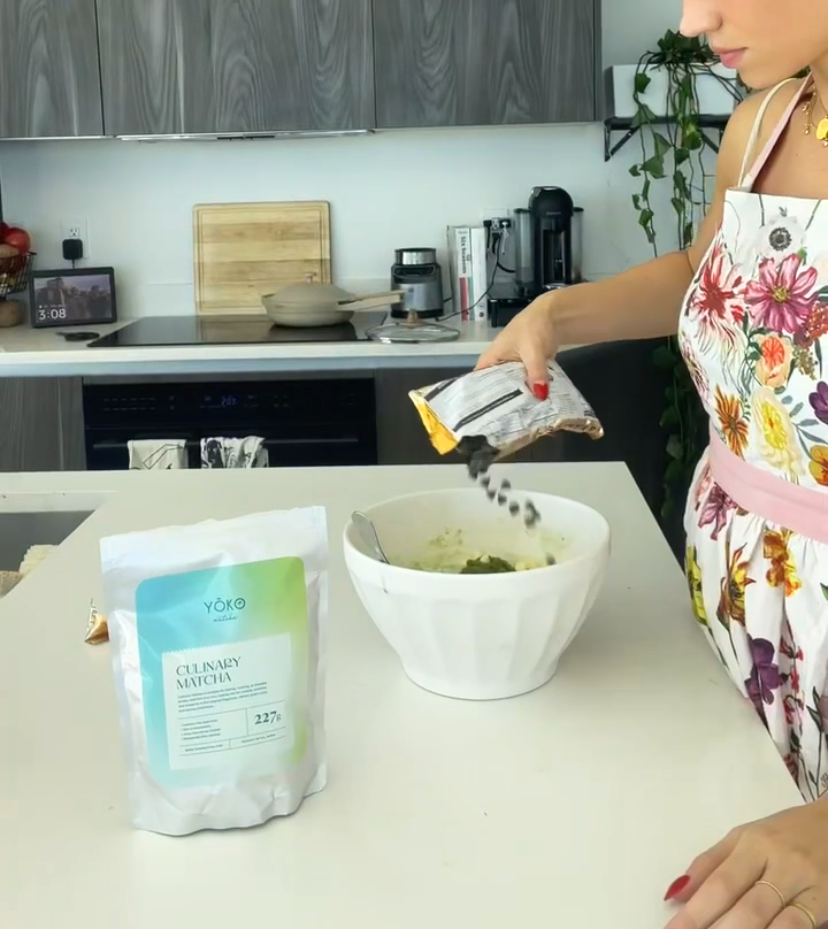Matcha, the vibrant green powdered tea, has garnered immense popularity in recent years, revered not only for its distinct flavor but also for its potential health benefits.
However, within the realm of matcha, there exists a dichotomy that often puzzles enthusiasts: Ceremonial Grade Matcha versus Culinary Grade Matcha.
What exactly sets these two apart, and how do their disparities influence their uses and qualities? Let's embark on a journey through the nuances of these two distinct grades of matcha.
Unveiling Ceremonial Grade Matcha
Ceremonial Grade Matcha, often deemed the pinnacle of matcha quality, is meticulously cultivated and harvested, adhering to stringent standards.
This grade represents the finest leaves meticulously shade-grown, handpicked, and stone-ground to an exceedingly fine powder.
The process of crafting organic ceremonial grade matcha involves shading the tea plants weeks before harvesting, which stimulates the production of chlorophyll and enhances the vibrant green hue and delicate flavor profile.
One of the hallmarks of ceremonial matcha is its exquisite taste, characterized by a harmonious blend of umami, sweetness, and a subtle, lingering bitterness.
The texture is notably smoother, owing to its finer particle size achieved through precise grinding techniques.
When whisked with hot water using a traditional bamboo whisk (chasen) in a ceremonial bowl (chawan), it produces a frothy, velvety liquor, creating a sensory experience that's revered in Japanese tea ceremonies for its calming and meditative qualities.
Exploring Culinary Grade Matcha
On the other end of the spectrum lies Culinary Grade Matcha, which, while also derived from high-quality tea leaves, is cultivated with a focus on versatility rather than the subtleties demanded by ceremonial traditions.
Culinary matcha is often sourced from leaves slightly lower on the plant, which may have a slightly bitter or more astringent taste compared to the smoother, sweeter ceremonial counterpart.
The production process of organic culinary matcha involves less meticulous shading, resulting in a different chlorophyll concentration and a less vibrant green color compared to ceremonial matcha.
Its flavor profile tends to be more robust and bitter, making it suitable for blending into recipes or beverages where the taste isn't the primary focus.
Key Differences and Uses
Ceremonial Grade Matcha:

Key Characteristics:
-
Quality: Considered the highest grade, meticulously cultivated, and processed.
-
Production: Derived from the finest, shade-grown tea leaves, handpicked, and stone-ground to a fine powder.
-
Color & Texture: Vibrant, bright green color with a fine, silky texture due to meticulous grinding.
-
Flavor Profile: Delicate, nuanced, and characterized by a balance of umami, sweetness, and minimal bitterness.
-
Usage: Primarily intended for traditional tea ceremonies.
-
Preparation: Whisked with hot water to produce a frothy, velvety liquor.
Uses:
-
Traditional Ceremonies: Ideal for authentic Japanese tea ceremonies due to its refined taste and aesthetic significance.
-
Pure Drinking Experience: Enjoyed for its nuanced flavor profile, savored without additives to appreciate its subtleties.
-
Meditative Practice: Often associated with mindfulness and relaxation due to its ceremonial significance and calming properties.
Culinary Grade Matcha:

Key Characteristics:
-
Quality: Sourced from high-quality leaves but with a focus on versatility rather than ceremonial standards.
-
Production: Less stringent shading and harvesting process compared to ceremonial grade.
-
Color & Texture: Generally a slightly duller green color, coarser texture, and less refined consistency.
-
Flavor Profile: More robust, slightly bitter, and suitable for blending into recipes or beverages.
-
Usage: Geared towards culinary applications rather than traditional ceremonies.
-
Preparation: Used in various recipes, beverages, and dishes for its flavor and color enhancement.
Uses:
-
Culinary Creativity: Well-suited for blending into smoothies, lattes, desserts, and savory dishes where the taste isn't the primary focus.
-
Baking & Cooking: Adds a distinct flavor and vibrant green color to baked goods, sauces, dressings, and savory dishes.
-
Versatile Ingredient: Blends seamlessly with various ingredients to impart a subtle matcha flavor while enhancing the overall presentation of dishes.
Choosing Between the Grades:
When deciding between Ceremonial Grade and Culinary Grade Matcha, consider the intended use and desired flavor profile.
Ceremonial Grade Matcha is prized for its refined taste and is best appreciated in its pure form during traditional ceremonies.
On the other hand, Culinary Grade Matcha offers versatility, adding a robust matcha flavor and color to various culinary creations.
In essence, the choice depends on whether you seek the serene and authentic matcha experience in a traditional setting or wish to explore the versatility of matcha in enhancing the taste and aesthetics of diverse culinary endeavors.
Understanding these distinctions enables matcha enthusiasts to appreciate the unique qualities of each grade, allowing them to select the ideal matcha for their preferred experience, whether it be the tranquility of a tea ceremony or the culinary exploration of diverse flavors and textures.

Conclusion
In the realm of matcha, the differentiation between ceremonial and culinary grades lies not only in their taste and appearance but also in their intended purposes.
While ceremonial grade matcha takes center stage in traditional ceremonies, culinary grade matcha offers versatility and adaptability in a wide array of culinary creations.
Ultimately, whether one seeks the serene tranquility of a traditional tea ceremony or the boundless culinary experimentation, understanding the nuances between these two grades of matcha empowers enthusiasts to choose the ideal matcha for their desired experience.
Grades have their unique allure, contributing their own essence to the world of matcha aficionados, each deserving appreciation in its distinct realm.
FAQs
1. What is the primary difference between Ceremonial Grade and Culinary Grade Matcha?
Answer: Ceremonial Grade Matcha is of the highest quality, intended for traditional tea ceremonies, with a delicate flavor profile. Culinary Grade Matcha is more versatile, used in cooking and beverages due to its slightly stronger taste.
2. Are there any visual differences between the two grades of matcha?
Answer: Yes, Ceremonial Grade Matcha typically has a vibrant green color and a finer texture compared to Culinary Grade, which might have a slightly duller green hue and a coarser texture.
Uses and Applications

3. How should I use Ceremonial Grade Matcha?
Answer: Ceremonial Grade Matcha is traditionally whisked with hot water to create a frothy, velvety tea. It's ideal for savoring its delicate flavor without mixing it with other ingredients.
4. Can I use Culinary Grade Matcha for drinking as tea?
Answer: While it can be prepared as tea, Culinary Grade Matcha's stronger taste and coarser texture might not provide the same refined experience as Ceremonial Grade Matcha.
5. What culinary applications suit Culinary Grade Matcha?
Answer: Culinary Grade Matcha is excellent for blending into smoothies, lattes, desserts, and savory dishes, enhancing their flavor and color.
Quality and Production
6. How is Ceremonial Grade Matcha produced?
Answer: It's crafted from shade-grown, handpicked tea leaves, undergoing meticulous shading before harvest, resulting in a delicate flavor profile and vibrant green color.
7. What differentiates the production of Culinary Grade Matcha?
Answer: Culinary Grade Matcha may come from leaves slightly lower on the plant and undergoes less shading, resulting in a slightly stronger taste and a less refined texture compared to Ceremonial Grade.
Purchasing and Selection

8. How do I know if I'm purchasing Ceremonial or Culinary Grade Matcha?
Answer: Look for labeling or descriptions specifying the grade. Ceremonial Grade Matcha often has more detailed production and taste descriptions.
9. Is there a significant price difference between the two grades?
Answer: Yes, Ceremonial Grade Matcha tends to be more expensive due to its meticulous production process and higher quality.
Taste and Flavor Profile
10. What does Ceremonial Grade Matcha taste like?
Answer: It typically has a delicate, nuanced flavor with a balance of umami, sweetness, and minimal bitterness.
11. How does the taste of Culinary Grade Matcha differ from Ceremonial Grade?
Answer: Culinary Grade Matcha tends to have a more robust, slightly bitter taste compared to the smoother and sweeter Ceremonial Grade.





